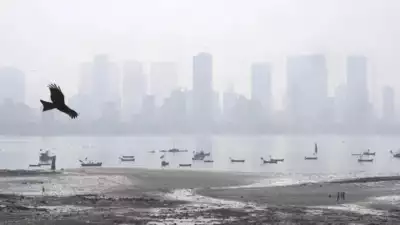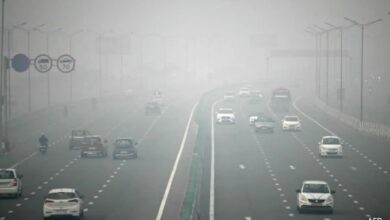

The government and private organizations in Mumbai have been given clear rules by the Municipal Corporation to control air pollution. If they don’t follow these rules they will face consequences or actions will be taken against them. It’s a warning to ensure everyone does their part to reduce air pollution.
the Mumbai Municipal Corporation (BMC) is taking action to reduce air pollution in the city. They’ve given out clear instructions. The government and private organizations must follow these rules or else they’ll face consequences like penalties or other actions. It’s a way to make sure everyone helps in reducing air pollution.
climate change is making the air quality in Mumbai worse especially in the city and its surrounding areas. Because of this air pollution is going up. To tackle this problem the Municipal Commissioner and Administrator Iqbal Singh Chahal, called a meeting with all the government and private groups involved in construction and pollution. In this meeting he announced that they would create rules for controlling dust and pollution at construction sites in Mumbai. The Brihanmumbai Municipal Corporation has now issued guidelines to address air pollution in the city. It’s all about taking steps to make the air cleaner in Mumbai due to these environmental challenges.
these rules are a must for everyone involved, and they need to be followed very carefully. Commissioner Iqbal Singh Chahal has made it clear that if anyone doesn’t follow these rules properly they will face serious consequences or punishments. it’s important for everyone to take these guidelines seriously and follow them to avoid getting into trouble.
The Mumbai Municipal Corporation has issued new guidelines for construction projects and pollution control. Here’s a simplified explanation of the key points.
For tall construction projects over 70 meters, there should be 35-foot high metal sheets around the perimeter.
Construction areas larger than one acre should have 35-foot high metal sheets, and smaller sites need 25-foot high sheets.
Under-construction buildings must be covered with green cloth, jute sheets, or tarpaulin on all sides.
When demolishing structures, they must be covered with tarpaulin or green cloth, and water should be used to control dust.
Water misting should be used during material loading and unloading, and anti-smog guns can be used to reduce pollution.
Water should be sprinkled on dust-prone materials at construction sites.
All vehicles carrying construction materials must be fully covered to prevent debris from becoming airborne.
Construction sites should have CCTV cameras and ensure that vehicles are not overloaded.
Air pollution monitors must be deployed at workplaces and the data made available to BMC officials.
Activities like grinding, cutting, and drilling should be done in enclosed areas with continuous water spraying to reduce dust.
Construction waste should be taken to designated sites, and vehicles must be cleaned afterward.
Vehicles must have valid pollution certificates.
Construction crew managers must wear safety gear like masks and helmets.
Barricades should be used on BMC work sites like bridges and flyovers.
Above-ground metro construction sites should have barricades, and measures to control pollution.
These rules should be followed by various government and private construction agencies.
Ward commissioners will create teams to prevent illegal dumping of construction debris at night.
Image Source:- https://timesofindia.indiatimes.com/city/mumbai/bmcs-seven-step-strategy-to-reduce-air-pollution-in-mumbai-budget-2023-2024/articleshow/97597350.cms?from=mdr






